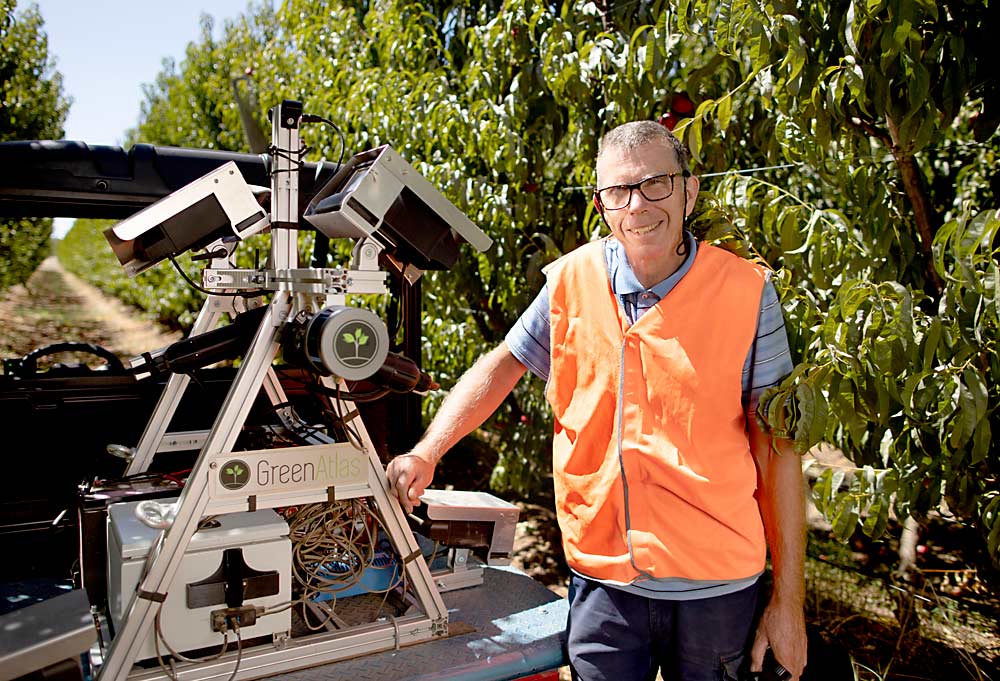
An ambitious, 2.5-year initiative is helping to develop and test new technologies to quickly, easily and nondestructively determine maturity and other quality characteristics of peaches, nectarines, plums and apricots. The initiative, called Sensors for Summerfruit, includes two seasons of trials in the field — one just completed — followed by comprehensive analyses to assess the performance of three advanced-sensing products.
Launched by Australia’s Food Agility Cooperative Research Centre and led by Agriculture Victoria, Sensors for Summerfruit targets the export market, according to the project leader and Agriculture Victoria research scientist Ian Goodwin.
“A large focus is on exporting fruit, particularly to Asia, where the markets have all got their own preferences, whether it’s for fruit size, firmness or sweetness,” Goodwin said. Growers and distributors also want information about how long fruit will keep in storage, so they can meet market expectations.
“These are really big issues for growers, and we think that there’s opportunity with the way that sensor technology is developing so quickly, as well as the availability of electronics, Bluetooth and mobile phones, to improve the objective measures of fruit quality and fruit maturity while the fruit is on the tree in the orchard,” he said. It’s hoped such tools can “guide growers as to what to do in terms of determining if the fruit needs harvesting, whether it will make the market destination, and whether it will meet consumer satisfaction,” he said.
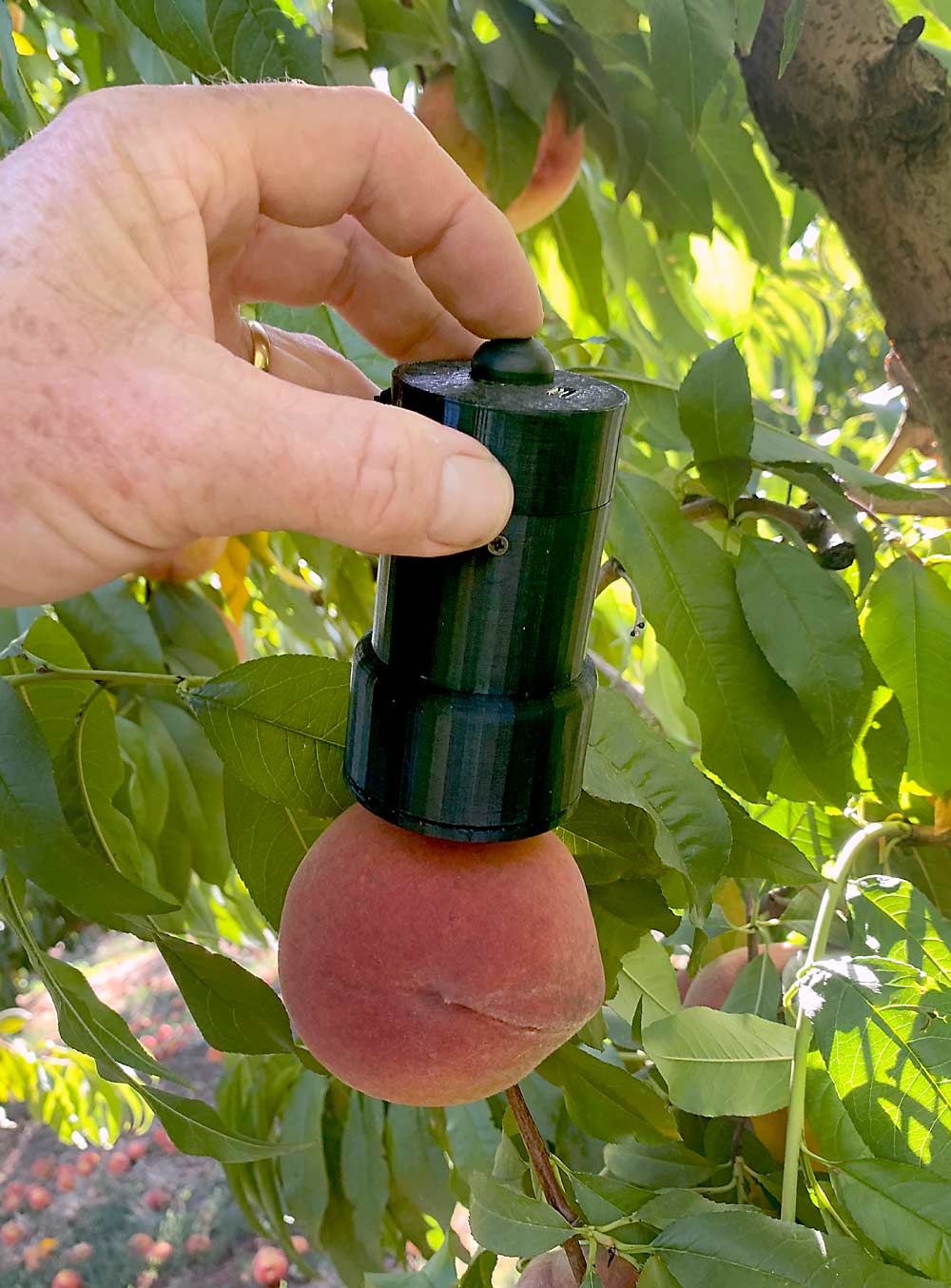
The initiative is centered on a range of technologies, all in development by research groups in Australia. These include:
—Handheld devices to measure maturity, sweetness and color preharvest, and potentially internal browning postharvest.
—A vehicle-mounted sensor platform to speedily count fruits in entire rows and can also measure fruit color and diameter.
—A drone-to-vehicle approach to detect gases associated with fruit ripeness as well as overall tree health.
During the just-completed growing season in Australia, Goodwin and his research group tested technologies in the experimental orchards at Agriculture Victoria’s Tatura SmartFarm and collected data from a few commercial farms. They plan to continue and expand evaluation next season, spending time with growers to get their opinions of the technology and weigh overall costs and benefits.
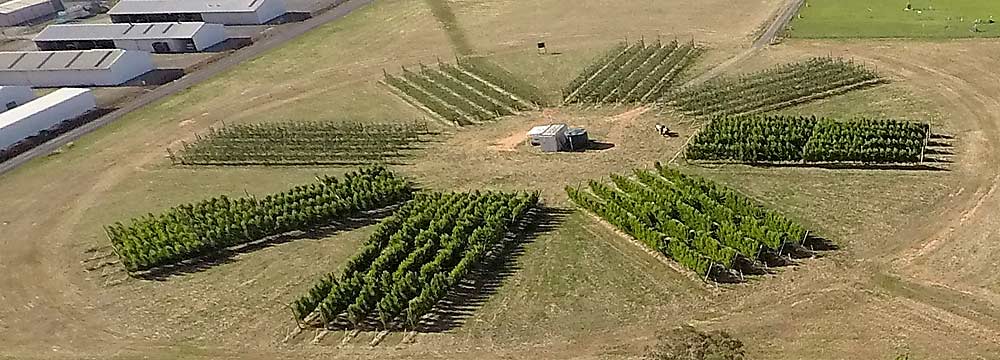
Hand-held and vehicle-mounted sensors
Rubens Technologies of Melbourne developed handheld, battery-operated sensors that resemble a short wand with a funnel-like cup on one end. After placing the cup over a piece of fruit, the device shines light on it and captures light that is reflected from the fruit’s surface, as well as fluorescence emitted from pigments that make up the skin color, said Daniel Pelliccia, the company’s founder and CEO. To make use of the reflectance and fluorescence data, the researchers compare the data to known quality parameters they have collected the old-fashioned, destructive way, and then they essentially teach the algorithms which measurement range correlates to which parameter.
“The device itself is very simple,” Pelliccia said. “It has just one button to initiate the scan, and then there is a smartphone app that takes care of collecting the data and then returning the values of interest for the user. So, a grower can scan a fruit and, in real time, get a report on their smartphone with all of the commercial quality parameters they are interested in.”
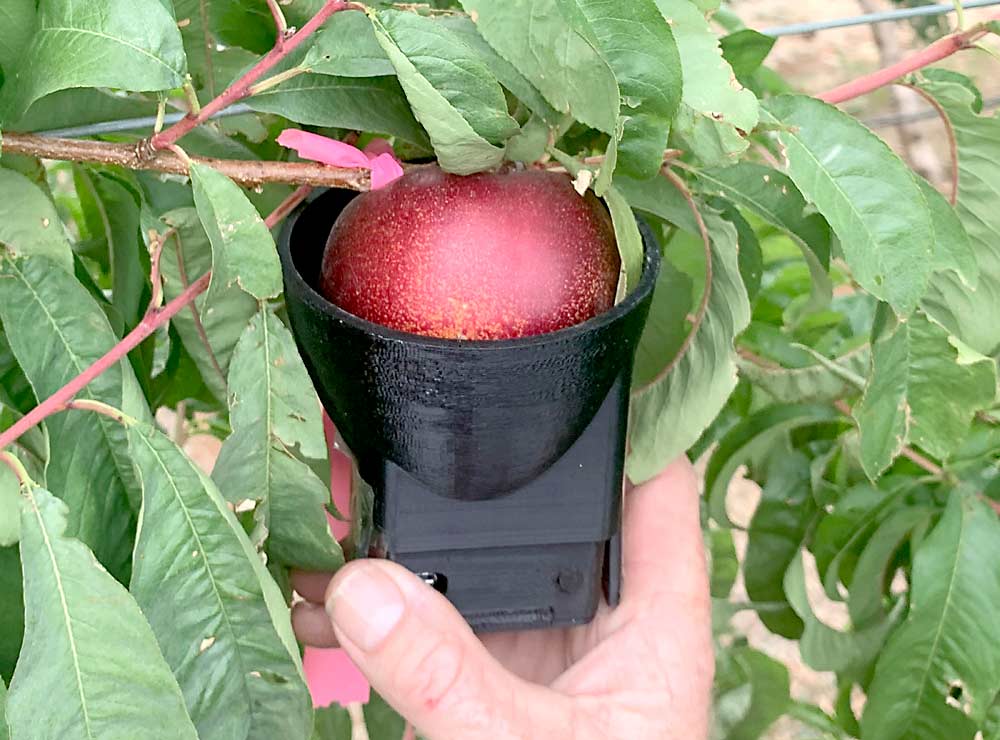
So far, the Agriculture Victoria evaluation shows the device works very well for determining color, firmness and sugar content, Goodwin said, and he hopes the Rubens research team will soon be able to add an algorithm for predictions of fruit browning in harvested fruit.
The browning work is a bit less advanced, but Agriculture Victoria’s studies this past year provided preliminary data showing that the algorithm can predict with more than 90 percent accuracy if a harvested fruit has browning; with 80 percent accuracy whether a fruit coming out of cold storage will brown in a few days’ time; and with 65 percent accuracy whether a newly picked fruit will develop browning three weeks later and following cold storage, Pelliccia said. He looks forward to another season of data collection to reinforce those results.
Goodwin is also excited about the vehicle-mounted sensor platform, called a Cartographer, developed by Green Atlas of Sydney. The company already offers the technology to apple growers (see “Evolutions in imaging”) and is also expanding it for the stone fruit industry, said company co-founder Steve Scheding. In this approach, an all-terrain vehicle is equipped with a sensor platform that includes a high-speed optical camera that counts fruit on trees as it runs up and down rows, and also a remote-sensing method called light detection and ranging, or lidar, that measures details of tree geometry. Using the combined data, the Cartographer produces a map of the orchard and reveals which areas may need thinning or other attention.
For stone fruits in particular, Green Atlas worked with Goodwin’s Agriculture Victoria group to perform independent validation of its new summer fruit sizing and color analysis by comparing the results of traditional data-collection methods against those of the sensors. The color mapping work has gone so well that the company began making it available to all fruit growers in late June.
“On the sizing, we’re being a bit more circumspect and are going through a process of rolling it out commercially, but kind of like a beta feature,” Scheding said, noting that they want to perform additional caliper-sizing versus Cartographer-sizing tests to ensure the latter is “absolutely true at scale.”
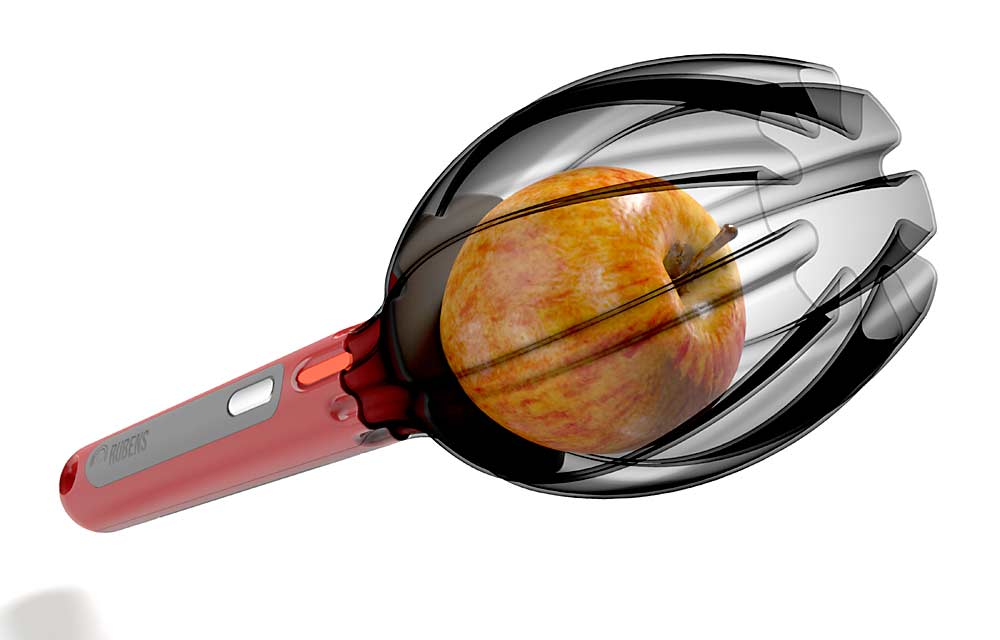
Drone-to-vehicle sensors
The third project under consideration in the Sensors for Summerfruit initiative is similar to an approach used by the U.S. National Aeronautics and Space Administration to monitor atmospheric conditions, according to co-developer Alessandro Gardi, senior research fellow at the RMIT University School of Aerospace, Mechanical and Manufacturing Engineering in Melbourne.
“Based on similar technology, we came up with the idea of monitoring carbon dioxide and we are expanding now to other gases, particularly volatile organic compounds that are emitted by orchard fruits during the maturation process,” he said.
The idea is to use the atmospheric gases to determine the health and productivity of the orchard, Goodwin said.
“At the moment, they’re most interested in looking at carbon dioxide and how well the tree is photosynthesizing, but it also should pick up elevated respiration relating to stress or even fruit maturity,” he said. Eventually, he’d like to measure the ethylene coming off the crop, “because that’s a really good indicator of fruit maturity and could be used for storage applications as well,” he said. “That would be quite exciting.”
This approach, called bistatic lidar, combines a laser transmitter and a receiver: one on a drone and one on a ground vehicle, such as a tractor. Depending on the detection filters used, this transmission-receiving system assesses varying concentrations of different atmospheric gases as the transmitter and receiver move synchronously through the orchard. A second laser beam that is slightly offset from the target acts as a control.
A prototype of the bistatic lidar technology, including the optical and electronic hardware, is already completed, and testing has shown very good results, Gardi said. The researchers are currently refining the software to more precisely measure the targeted concentrations of carbon dioxide and volatile organic compounds and are looking forward to additional flight testing to validate their measurements in the coming growing season.
The next step is to begin pursuing commercialization.
“It is really rewarding to see how much progress has been achieved already in the project,” said co-developer Roberto Sabatini, professor of the RMIT school of engineering. “We’re very happy to serve the growers and broader industrial community, delivering value with a product and a system that really can quickly get to market.”
—by Leslie Mertz

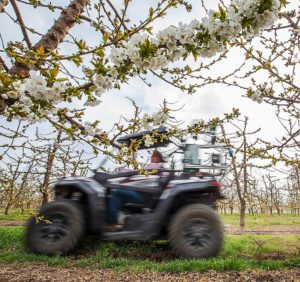





Leave A Comment